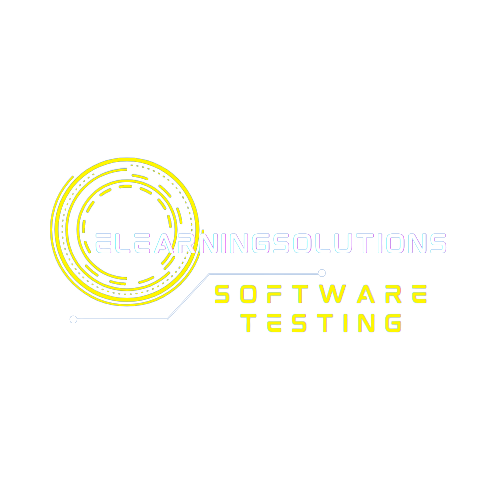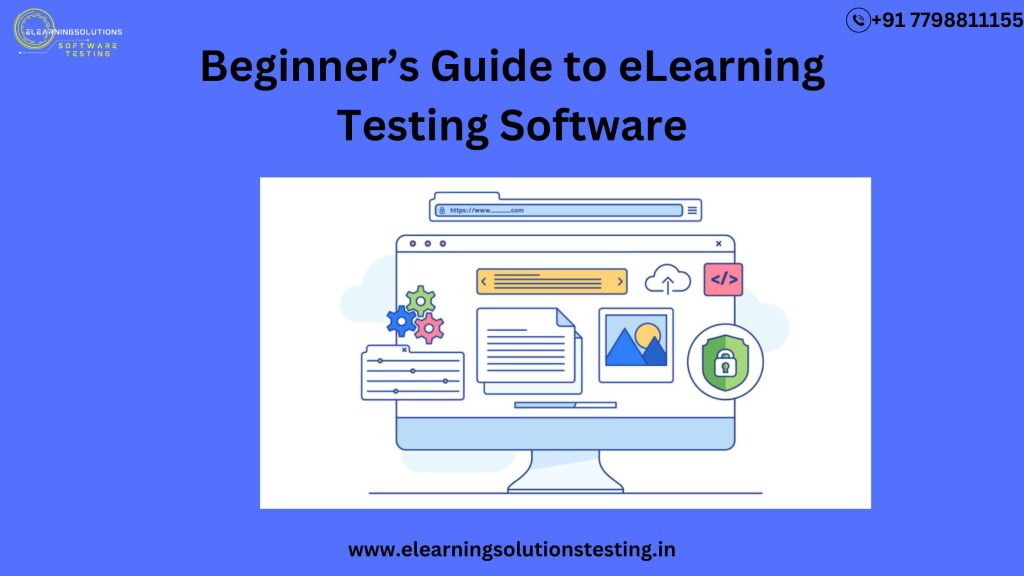Overview
E-learning is transforming business training and education in the current digital era. However, how can the efficacy and quality of eLearning courses be guaranteed? Software for eLearning testing can help with that! If this idea is unfamiliar to you, don’t worry. This article will showcase the top software choices, examine market trends, and assist you in understanding the fundamentals. Let’s get started and move toward more intelligent learning solutions!
What is eLearning testing crucial?
Imagine spending time and money on an online course only to find out later that it has inaccurate assessments, missing links, or unclear navigation. Learners may become frustrated and less engaged with poorly tested eLearning modules. Software for eLearning testing ensures:
Smooth user experience: classes must be simple to use and intuitive.
Delivering material accurately There are no errors, broken links, or out-of-date details.
Effective evaluations: quizzes and tests should work and give accurate results.
Device compatibility Content must function flawlessly across all platforms because learners access it from a variety of devices.
Data security: making certain that user information and progress monitoring are handled safely.
Important Market Trends for eLearning Assessment
Let’s examine some major factors influencing the eLearning testing market before delving into particular software:
1. There is an increase in automation
To expedite the process, many businesses are abandoning manual testing in favor of AI-driven automation systems. Organizations can efficiently test vast amounts of content thanks to automation, which lowers human error and saves crucial time.
2. Testing on Mobile Devices First
Ensuring mobile compatibility is crucial since more students are accessing courses via smartphones and tablets. Cross-platform testing, adaptive layouts, and mobile-responsive design are crucial elements of contemporary eLearning.
3. Solutions Based on the Cloud
Updates, cooperation, and accessibility from any location are made possible by cloud technology. Cloud-based eLearning testing technologies are being used by businesses more and more to support remote work and international training initiatives.
4. Learning Management System (LMS) integration
Better reporting and more efficient workflows are made possible by testing tools that interface with LMS platforms. This simplifies administrative procedures while guaranteeing that the quality of the content complies with organizational learning objectives.
5. AI-Powered Analytics and Data-Driven Insights
Businesses may monitor user engagement, learning trends, and course performance with the aid of advanced analytics and AI-driven insights. Organizations can customize content according to user behavior and maximize learning experiences with predictive analytics.
Top Choices for eLearning Testing Software
The following are a few of the top eLearning testing resources on the market right now:
- 1. The test rail Teams can effectively organize, carry out, and monitor eLearning tests with the help of this robust test management solution. Ideal for: Businesses seeking a methodical testing procedure with comprehensive analytics.**Features include real-time reporting, automation tool integration, and test case management.
- 2. Captivate Prime by Adobe A feature-rich tool that makes it possible to thoroughly test eLearning courses inside Adobe’s learning management system. Ideal for: Businesses that currently make use of Adobe’s toolkit. Features include compliance tracking, AI-powered customization, and interactive tests.
- 3. The LambdaTest a cloud-based platform that guarantees mobile and cross-browser compatibility for eLearning materials. Ideal for: Businesses that place a high priority on testing for compatibility and responsiveness on mobile devices. Features include real-time debugging, automated testing, and device compatibility testing.
- 4. Cloud SCORM is a specific tool for pre-deployment testing of SCORM-compliant courses. Ideal for: eLearning companies that use content based on SCORM. Features include analytics tracking, compatibility checks, and SCORM course testing.
- 5. Testing by Users focuses on actual user input to assist companies in understanding how students engage with their courses. Ideal for: Businesses looking to make improvements based on direct user insights. Features include usability testing reports, user testing on various devices, and video-based feedback.
- Example from the Real World: The Impact of eLearning Testing Let’s examine a real-world example of a corporate training program that used testing to increase the efficacy of their eLearning. Company: An international business in the field of information technology Challenge: Workers complained about their internal training courses’ inconsistent evaluations, broken links, and numerous technical issues. Employee engagement and course completion rates suffered as a result.
- Solution: To systematically find and fix faults, the organization used a mix of TestRail and LambdaTest.They
Automate routine testing procedures.
carried out usability studies on a range of gadgets.
used user testing to collect user input.
Results: Learner engagement dramatically improved and course completion rates rose by 40% in just three months.
Realistic Advice for Beginning
Here are some helpful pointers to get you started now that you understand the significance of eLearning testing and some of the best resources:
1. Establish Your Objectives
Decide what you hope to accomplish with testing. Are you more concerned with content accuracy, performance, usability, or functionality? Your testing procedure will be guided by specific goals.
2. Select the Appropriate Equipment
Select software that fits the needs and budget of your business. Take into account elements like analytics functionality, connectivity with your LMS, and automation capabilities.
3. Begin Small and Grow Over Time
Before implementing a comprehensive plan, start by testing a small number of components. With this strategy, you may hone your techniques and pinpoint best practices before implementing them more widely.
4. Use Actual Users for Testing
Feedback from real students is very helpful. To learn more about usability and user experience problems, hold beta testing sessions with staff members or students.
5. Constantly Monitor and Improve
Testing ought to be a continuous procedure. To find areas for development and guarantee ongoing eLearning content optimization, use analytics and feedback loops.
Overcoming Typical Obstacles in eLearning Assessment
1. Limited Funds for Testing Equipment
Solution: Prior to committing to commercial plans, start with open-source or free trial versions of the products.
2. Insufficient Technical Knowledge
Solution: Make use of technologies with easy-to-use interfaces, or think about employing eLearning testing experts.
3. Time Limitations
Solution: Use automation technologies to boost productivity and decrease manual testing.
Take Your eLearning Success to the Next Level!
To make sure eLearning courses provide a smooth and successful learning experience, testing is an essential step. Whether you work as an HR specialist, corporate trainer, or educator, investing in the appropriate eLearning testing tools will help you develop learning programs that have an impact.
Organizations can improve the caliber of their training programs and increase learner engagement by keeping up of market developments and utilizing the appropriate software.
Call to Action: Are You Prepared to Enhance Your eLearning Approach?
Are you curious in how to make your eLearning programs more effective? Investigate our knowledgeable resources, keep up with market developments, and begin your path to more intelligent learning solutions right now!
YOU MAY BE INTERESTED IN
ABAP Test Cockpit(ATC) – Introduction and Steps
Salesforce Developer Salary in India An In-Depth Analysis

